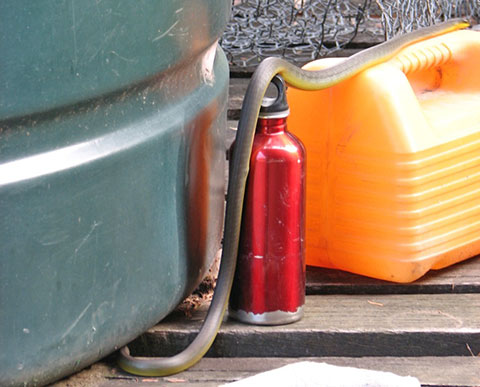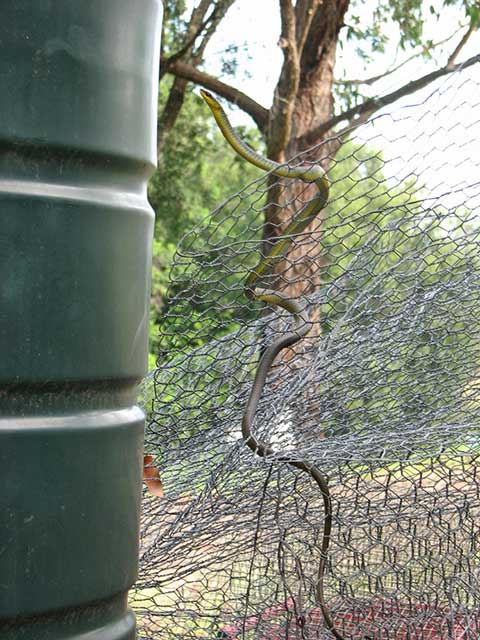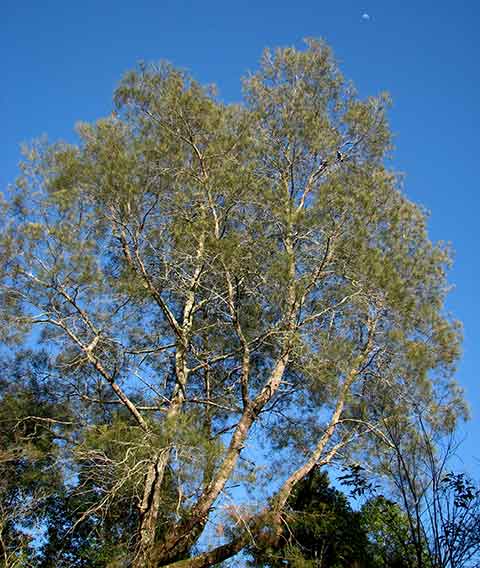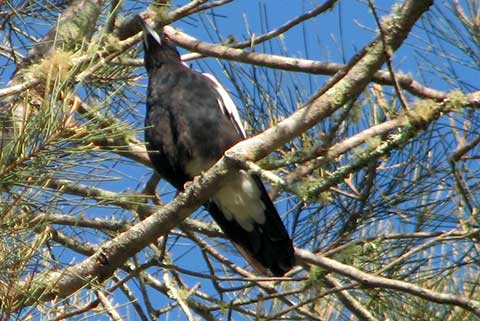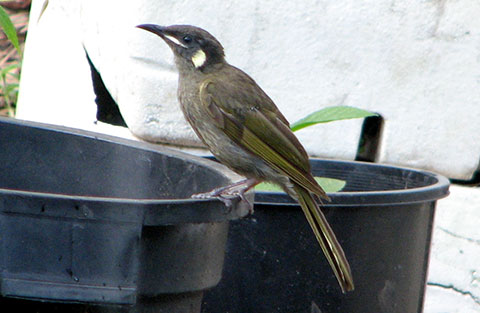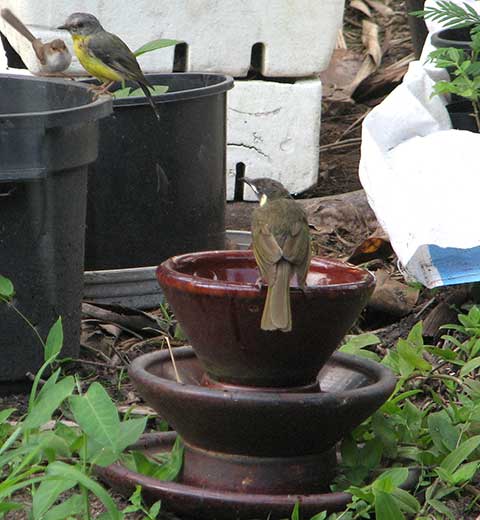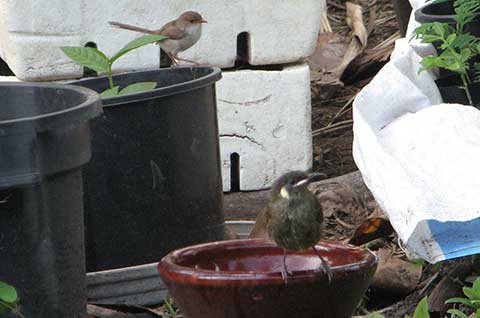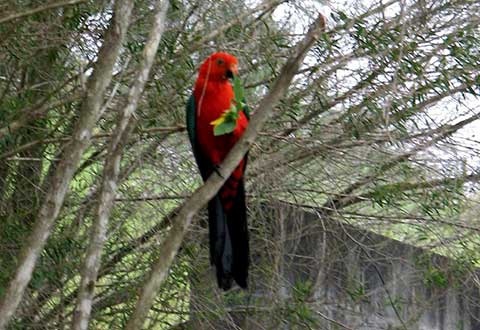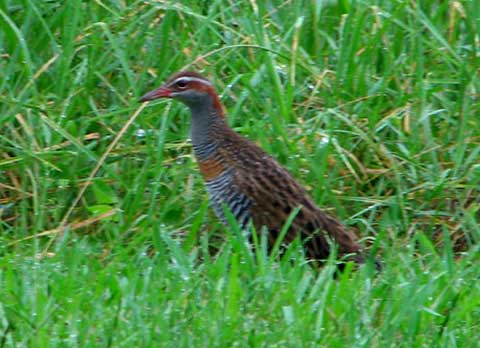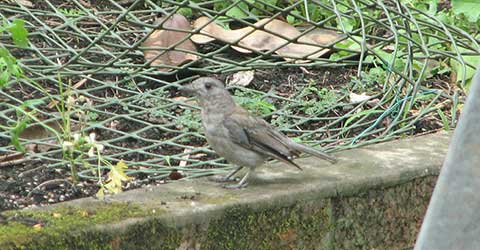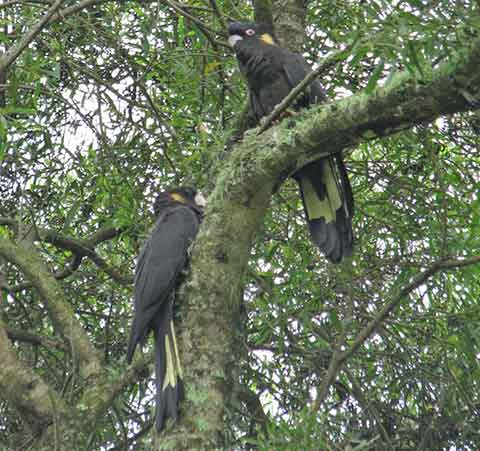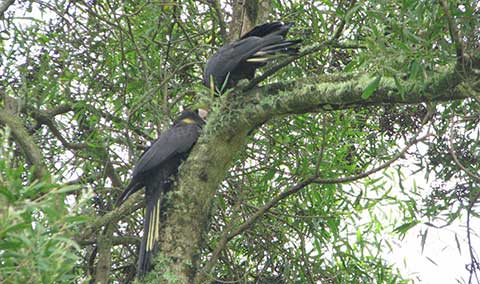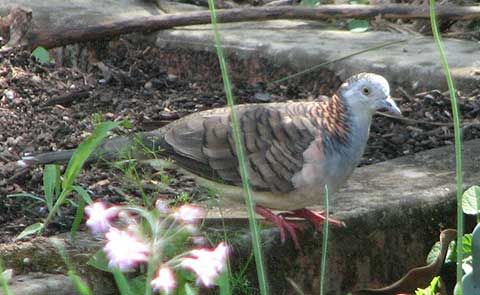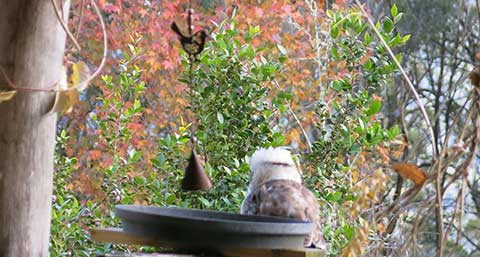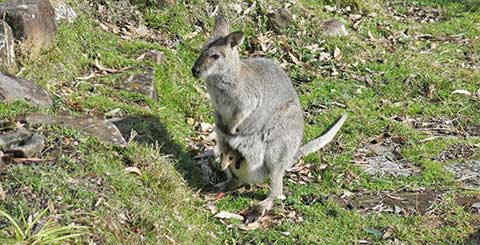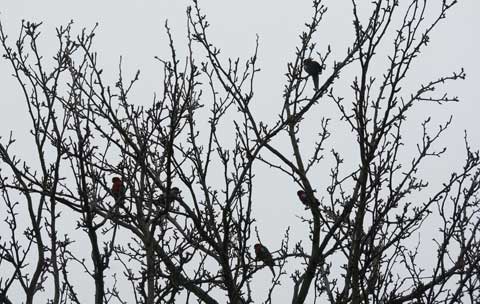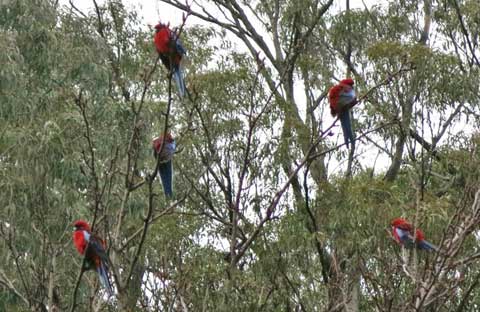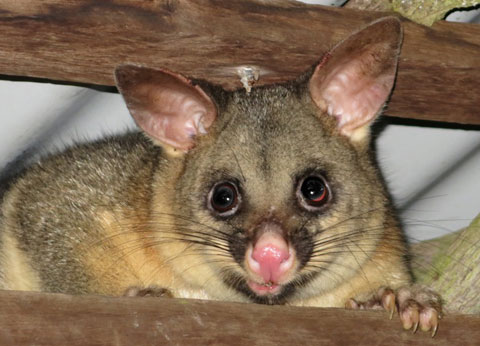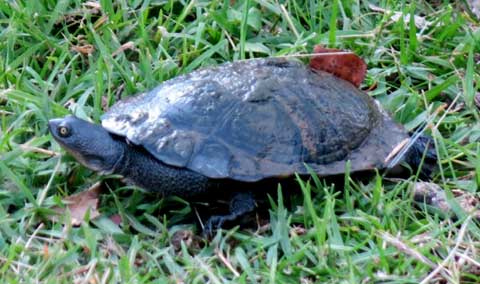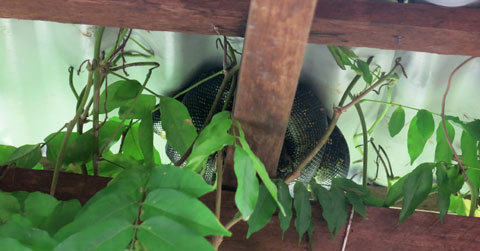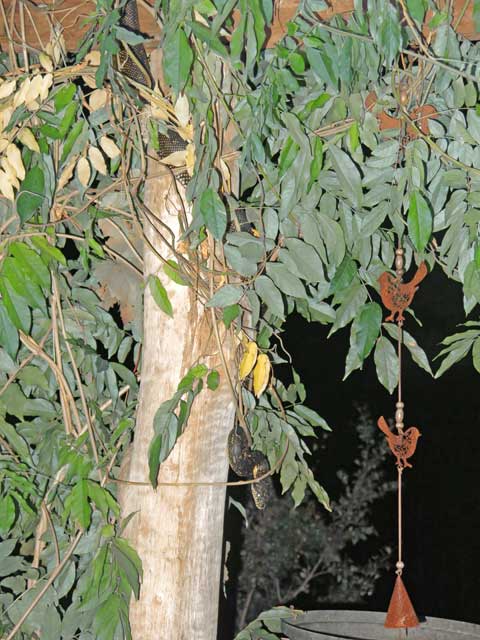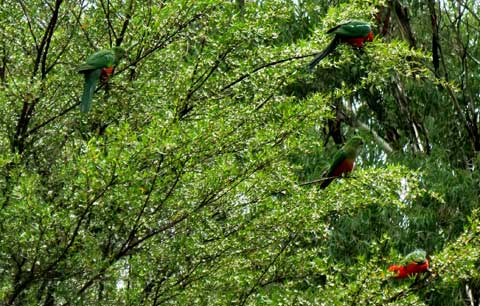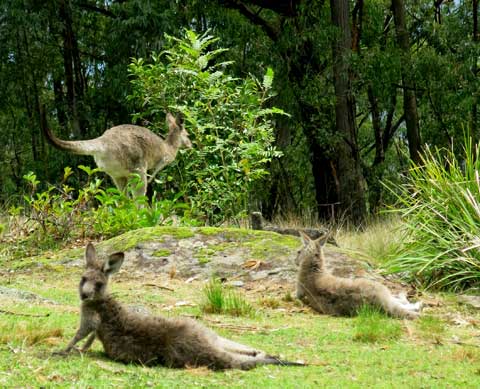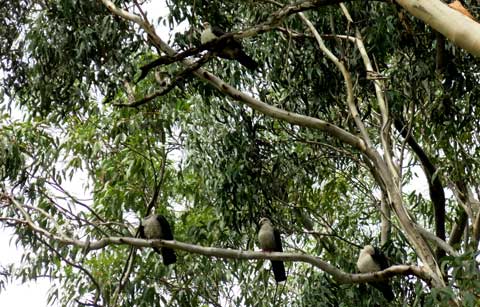About to fill a bucket at the little overflow water tank, I just happened to see this little head poking out.
Not the sort of snake to make my heart leap, I knew — although quite what sort it was, I didn’t.
With amazing liquidity it poured itself up and over my drink bottle and further; it seemed to keep coming forever.
What was even more amazing was how it then threaded itself in and out of the netting rolled and stacked on the tank stand.
When it reached the top it searched for purchase on the plastic tank but kept slipping, so it gave up and reverse-threaded its way back down and away.
It is, I learnt, a Green Tree Snake, which can grow up to two metres long. This one was long enough!
It’s handsome and harmless, but maybe not so smart, to mistake a green tank for a tree?
